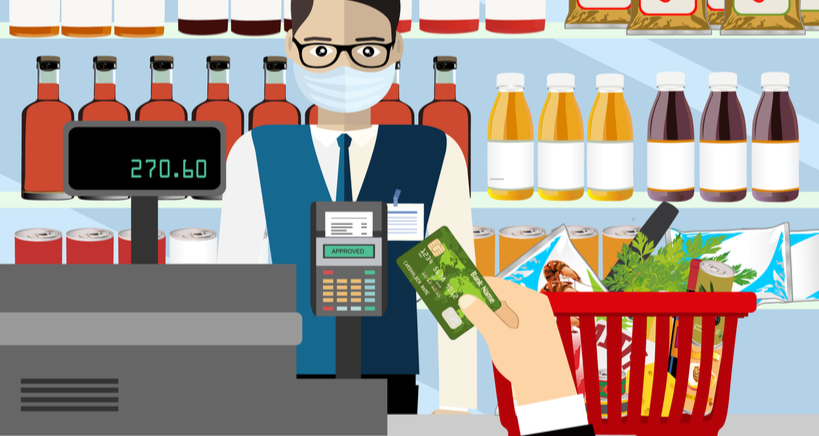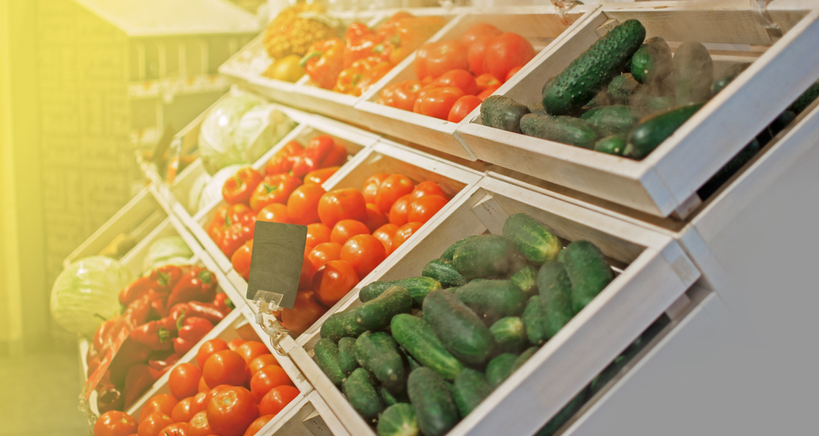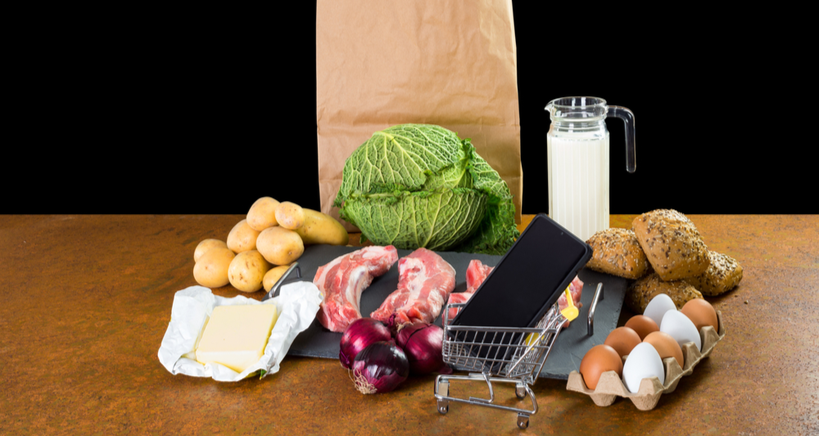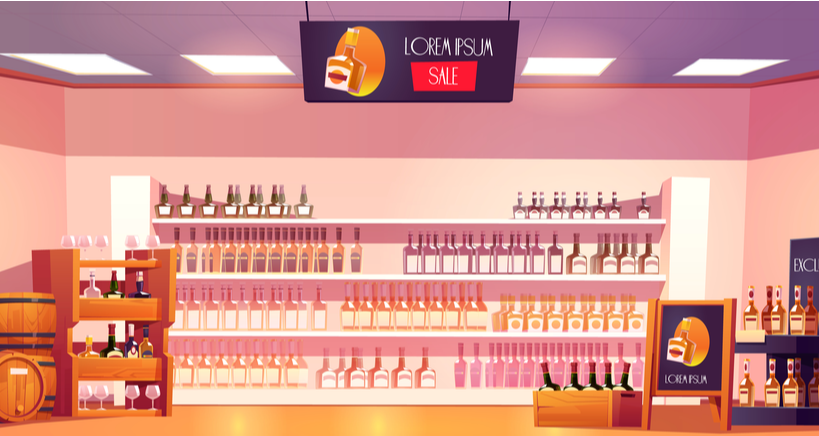
The corona pandemic has wreaked havoc on the restaurant industry, forcing business owners to restrict their operations or shut down altogether. Around the world, foodservices relying on dine-in customers have had to scramble to keep their businesses afloat. With social distancing regulations in full force, many have turned to now-familiar solutions such as transforming their brick-and-mortar into a take-out and delivery service.
Part-and-parcel of the new landscape are also curbside pickups, drive-through windows, and partnerships with third-party delivery services. Others have set up shop as ghost kitchens, aka virtual restaurants, where all orders and payments take place online and contactless delivery (i.e. food left at the customers’ door or dropped off at a prearranged location) is the modus operandi.
Takeout Not Working? Become a Grocer Instead
However – and this is good news for struggling foodservice owners – these strategies are not the sole items on the menu nor are they only alternatives on the table. The fact is that for many restaurateurs, providing delivery is not logistically or financially feasible. Likewise, their already razor-thin budgets cannot afford the fees involved in getting help from delivery services such as Grubhum or Uber Eats. Instead, to survive the corona crisis and stay financially sound, some restaurants have started selling groceries – and with surprisingly lucrative results.

How To Transform Your Restaurant into a Grocery Store
If you own a restaurant, bakery, cafe, bar, fast-food joint, or pizza shop and want to try your hand at becoming a grocer, here is how it works: Start by selling the items you already have in your pantry and inventory. Next, add the food and ingredients you already buy in bulk and start selling them to individual customers. Finally, contact some suppliers and stock up on the current top sellers, such as jarred and canned foods, frozen orange juice, fresh or frozen produce, toilet paper, and hand sanitizers. And here’s a “word to the wise” tip from the inside: Grocery sellers and food manufacturers are reporting significant increases in the sales of canned tuna, canned tomato sauce, and peanut butter in particular.
Independent Grocers Provide Relief Amidst Corona
And here is some more good news: As an independent grocer, not only can you keep your business alive during the pandemic, but industry experts report that temporary grocery stores are easing crowding in supermarkets, providing food in locations where access to food is limited, and helping relieve delivery bottlenecks. In the words of Greg Ferrara, President of the National Grocers Association: “Independent grocers are helping larger chains meet demand during this time as grocery stores are being restocked at unprecedented speeds.”

Major Restaurant Chains Add Groceries to their Menu
And it’s not just small businesses that are getting into the act. Some of the best-known conglomerates and chains in the ‘biz have joined the trend and are now selling groceries.
- Case in point: Denny’s. Over 30 Denny’s locations currently sell groceries on the premises, and customers can also order online or from their cars and restaurant workers will bring their order directly to them. Items available for purchase include bread, cheese, fresh and frozen produce, and paper goods. Explaining the move is this recent company statement: “This new service allows customers to get the food and supplies they need without compromising social distancing protocols or having to enter high-contact spaces.”
- Case in Point: Panera Bread. The popular brand has launched Panera Grocery, where breads, bagels, yogurt, milk, and fresh produce are flying off the shelves. Commenting on the initiative is Panera CEO Niren Chaudhary: “From limited choices on grocery shelves to the growing need to limit the number of trips outside of the home, it is an incredibly stressful time when it comes to putting wholesome food on the table. Panera Grocery can help provide better access to essential items that are increasingly harder to come by.”
- Case in Point: The Restaurant Group in Washington, D.C. Having recently launched the retail grocery business “Founding Market & Grocery” in lieu of its nationwide restaurant locations, FRG owner Dan Simons likens the opportunity to an ’emergency transfusion’ for an accident victim. Its e-commerce platform now allows customers to order over 800 supermarket staples, prepared foods, and cocktails, and to schedule pick-up times when groceries are loaded into their vehicles curbside. Its April-launched website logged $50,000 in orders in the first 48 hours and the pace has not slowed down since.
Food Suppliers Rise to the Occasion
If you are looking for a new business model that allows you to keep your eatery’s doors open and outlive corona, you are in luck. Shining a bright light on the competitive yet close-knit, interdependent nature of the food industry, major food suppliers such as Sysco and U.S. Foods are rising to the occasion by selling and shipping their bulk-size stockpiles of ingredients and staples to independent grocers. No longer in demand from chefs and bakers, dozens of egg flats, sacks of potatoes, and scores of 50-pound bags of flour are sitting in warehouses. The restaurant-turned-grocery-store paradigm creates a win-win-win scenario wherein supplies move, business owners stay in business, and consumers have access to shopping carts of goods that are hard to come by at conventional supermarkets. Sysco has even created a portal for professionals that offers advice for setting up regular markets or one-time pop-up events.
In the words of Katherine Miller, Vice President of Impact for the James Beard Foundation: “It provides a huge opportunity for restaurants to stay open. It’s a way for chefs to continue supporting the local food system and… [it] gives them much-needed revenue to help them from going bankrupt.” In fact, many newly-turned-grocers have been able to rehire the staff they let go of and are turning a pretty profit too.

Creative Ideas for Your Restaurant-Turned-Supermarket
If rolling out grocery services to customers interests you, draw inspiration from the creativity of a fellow restaurateur, Kevin Lillis, who manages Jaxon in Dallas. Transforming the 465-seat capacity beer garden into a mini grocery store, he prepares pre-packaged bags of goods and sells them at a flat rate. While customers have the option swapping items, each bag typically contains cheddar cheese, butter, a loaf of wheat bread, six eggs, potatoes, kale, black-eyed peas, lemons, lime, and more.
Wondering how to manage pricing the groceries you sell? Most of the eateries-turned-supermarkets add only a modest margin of profit to the cost of the items. In the words of one successful business owner: ‘We are pricing them so that they move.
Is the New Grocery Model the Way of the Post-Corona Future?
When it comes to the future of the foodservice industry post-COVID19, the jury is still out: Will dine-in establishments turned-take outs resume their former methods of operation or will remote ordering and contactless delivery remain a significant part of the picture? Are robots and food service automation – increasingly prevalent in China and other Asian countries – slated to take over the roles performed by manpower in an effort to reduce contamination and human error? Will the current boon in outdoor dining and seating arrangements continue or be a passing fad? Likewise, what is the post-pandemic future of the recently launched makeshift supermarkets?
The opinions, so far, are mixed: Simons, for example, hopes the Restaurant Group’s dining rooms will reopen and serve meals to customers once again. However, weary of the unknown trajectory of the pandemic, he anticipates maintaining the grocery-selling paradigm for the foreseeable future: “We might convert part of the dining room into an artisan market and allow shoppers to come inside once restrictions are loosened. If there’s another outbreak, we don’t want it to crush us; this [pivot] positions us for what’s ahead.” Katherine Miller of the James Beard Foundation agrees that we may be looking at a new norm the ‘biz for the short or possibly long term: “I think a lot of chefs and restaurants will stick with these new things to help diversify their revenues when things open back up.”
On the flip side of the frying pan, other restaurateurs have no intention of continuing to sell groceries post-pandemic. In the words of one traditionalist: ‘It’s not as rewarding. I’m thankful we’re doing it and hope it will bring in enough revenue to let us break even, but I miss making food and talking to customers. I’d like to go back to the restaurant business.’
Summing Up
With the growing menu of options available for restaurant owners to continue operating, during and post-corona, there is good reason to remain hopeful.
Good Luck and Good Health!